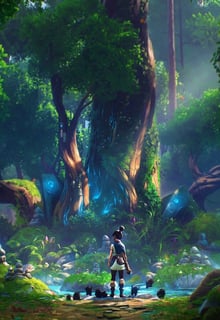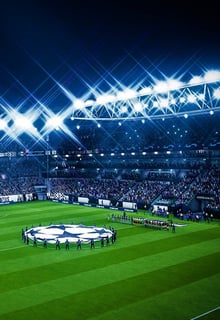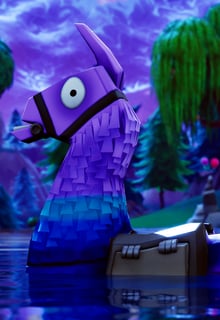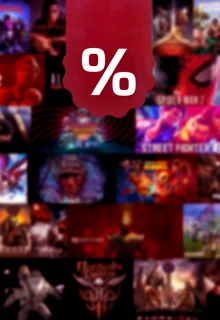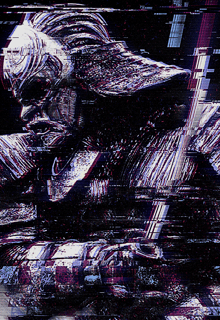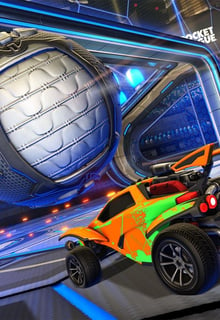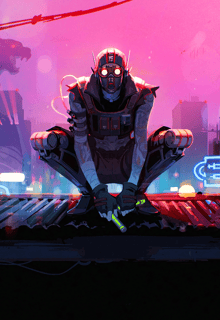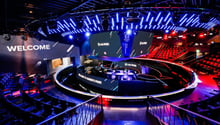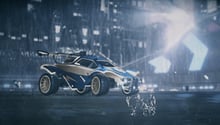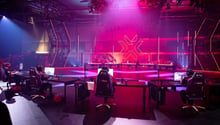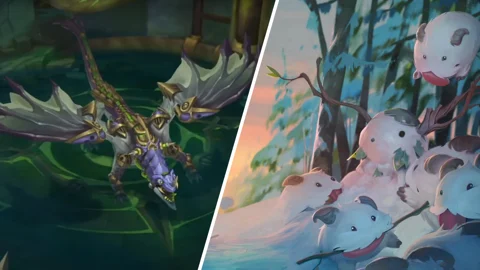League of Legends has multiple maps. But which LoL maps are still relevant and which ones have been forgotten by Riot Games?
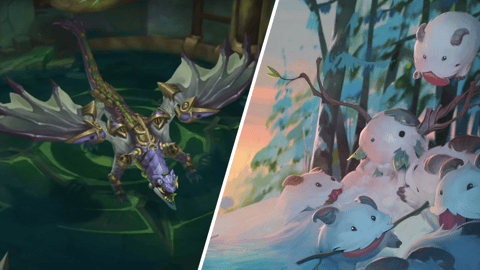
Summoner's Rift. The name is synonymous with League of Legends. It is the most famous battle arena from any MOBA ever created. This is the map players have called home for the last ten years, but with one map being in the forefront of it all, is there even room for other maps in League of Legends?
We take a look at League of Legends gameplay to further understand the complexity of the maps in League of Legends – because as shocking as it might seem – yes, there are other maps in League of Legends.
LoL Maps: What Maps Exist In League of Legends?
Currently, there are two playable maps in League of Legends. The most famous map is Summoner’s Rift, which is where players go head-to-head and try to destroy each other's Nexus. The other constantly available map is the Howling Abyss.
Summoner's Rift

The Lanes on Summoner’s Rift
Summoner’s Rift, the main map in League of Legends, has three lanes – the top, mid and bot lane. These are the lanes that the champions start off on to earn experience with which they’re able to level up. These lanes also have inner turrets and outer turrets which keep your ally champions safe from any enemy champion.
Each team has a base, where towers and the Nexus stand. Small minions spawn at the nexus throughout the game, making their way down each lane. You’ll have to kill those minions, gaining gold and experience. This is especially crucial in the early game when you haven’t reached a high level yet.
Each lane has a specific position – there is a distinct differentiation between top lane, mid lane and bot lane champions. In the bot lane, two champions usually move around – the ADC and support, while the top and mid lane is a 1 vs 1.
The whole point of League of Legends is for you and your team to kill any enemy champions and to destroy the opposing nexus.
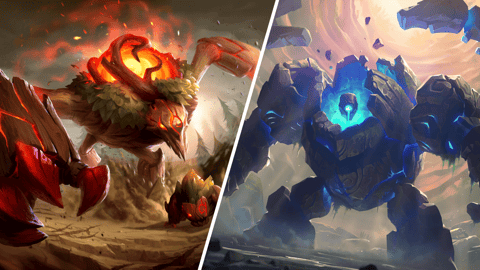
The Jungle on Summoner’s Rift
Between the lanes is the jungle. There is a top and bottom half of the jungle, which is in reference to the top and bot lane. The jungle on the red side of the map is mirrored on the blue side – this is in reference to the side you start on. The ‘red side’ refers to the nexus in the top right corner, while the ‘blue side’ refers to the nexus in the bottom left.
In the middle of the map is also a river which cuts the map in half. The top half of the river holds the strongest of the neutral monsters – Baron Nashor. The Baron spawns at twenty minutes and whichever team manages to get the final blow, will be rewarded with a short buff.
Other neutral monsters exist on Summoner Rift that also give buffs. It is the junglers job to clear the jungle, gaining experience and gold by doing so before making his way to a lane for a gank – the act of trying to kill an opponent in lane.
By killing monsters like the blue and red buff, the jungler – or any champion for that matter – will be rewarded with a buff that makes them slightly stronger for a certain duration. There are many other small monsters that the jungler can kill before making his way to gank a lane.
Some of the strongest and most useful buffs in League of Legends come from the Dragons. Currently, there are four different elemental dragons – also called drakes – in League of Legends. In Season 12, Riot is going to be adding two more elemental dragons to the map.
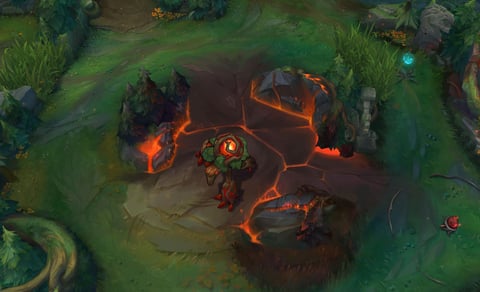
What is the Elemental Rift?
In 2019, before Season 10, Riot Games introduced the elemental rift, which refers to the changing landscape of the LoL map – depending on which elemental dragon spawns. To simply explain it we must look at the four existing dragons and two dragons to be added in Season 12:
- Infernal Drake
- Cloud Drake
- Ocean Drake
- Mountain Drake
- Hextech Drake
- Chemtech Drake
Each drake killed will give the team a buff to their stats which will last throughout the rest of the game. The first three dragons that spawn on the LoL map will be random. Any other dragon after that is going to be the same as the third dragon.
Let’s look at an example. The first dragon to spawn is a Cloud Dragon, then the second is a Mountain dragon. Neither of those dragons will spawn again. The third dragon in our example is the Infernal Dragon, then every dragon after that will be an Infernal Drake.
How long does this last though? Until one team has slain four dragons. Once one team has slain four dragons it’s time for the Elder Dragon to spawn. This Dragon, similar to the Baron, will give a team a short timed buff which will expire after a few minutes.
The third dragon that spawns will also influence the map, by changing the terrain. These are the effects every dragon has on the map:
| Dragon | Dragon Buff | Dragon Soul | Elemental Rift |
| Cloud Dragon | Grants 10 / 20 / 30 / 40 percent ultimate cooldown reduction, ignoring the CDR cap. | Grants 10% bonus movement speed, increased to 50% bonus MS for six seconds after casting one’s ultimate. | Cloud Rift creates win currents in the jungle and dragon pit which grants 20% movement speed. |
| Infernal Dragon | Grants 4 / 8 / 12 / 16 percent AD and AP. | Creates an explosion around the target when a champion deals damage with an ability or an auto-attack. It deals 80 + 22.5% bonus AD, plus 13.5% AP, and adds 2.75% bonus health | The Infernal Rift opens up the map around the dragon pit and jungle camps by burning down terrain and brushes. |
| Ocean Dragon | Restores 2.5 / 5 / 7.5 / 10 percent of missing health every five seconds. | Heals for 160 when a champion deals damage to enemies, it restores 80 mana, plus 36% bonus AD, 22.5 percent AP and 9% bonus health. | The Ocean Rift causes bushes to grow in the jungle and the dragon pit. New Honeyfruit plants as well as puddles which can be used by Waterwalkers also form. |
| Mountain Dragon | Grants 6 / 12 / 18 / 24 percent armor and magic resistance. | Grants a shield for 200 plus 18% bonus AD, 13% AP, 13% bonus health. | The Mountain Rift causes additional walls to form around the jungle and dragon pit. |
| Hextech Dragon | Grants attack speed and ability haste to the team that delivers the killing blow (5 Ability Haste and 5% Attack Speed per stack) | When a team obtains the Hextech Dragon Soul, they gain a unique ability that adds a chain lightning slow to their basic attacks and abilities, with a moderate cooldown | When the terrain transforms for the Hextech Drake, pairs of Hex-gates appear across the map which allow champions to quickly travel from one location to the paired counterpart. Hex-gates are activated with a brief channel (that can be interrupted by stuns or damage) before rapidly transporting a player across the map to the corresponding Hex-gate. |
| Chemtech Dragon | Will now grant a small amount of Tenacity and Heal/Shield strength when slain | Chemtech Soul will grant bonus damage when below a certain amount of health | Alongside the Chemtech Drake, the Rift will take on a new Chemtech-inspired appearance featuring Zaunite chemicals and mutated jungle plants with upgraded effects.
|
What is Fog of War on Summoner's Rift?
Fog of War refers to the darkness on the map. The jungle on Summoner’s Rift is dark and players walking around only have a certain radius of sight once they’ve entered the jungle. Of course, there are ways to get around this darkness by buying and placing wards on the map.
Wards give players vision where there was once darkness. This is important to know when you might get ganked and to keep an eye on the enemy jungler or mid laner, in case they’re ever roaming towards you.
Why is Map Awareness so Important?
Placing wards and having good awareness of the jungle is an important part of League of Legends. Pro players often state that keeping an eye on the mini-map will improve ones skill drastically since players can read situations and know when to go in and when to back off a fight.
This is done by placing wards in the jungle and at the entrance of the lanes. This way you can evade ganks, stay alive and keep killing minions. That way, you gain experience to level up and be effective in the late game to try and take over the opposing nexus.
The Howling Abyss
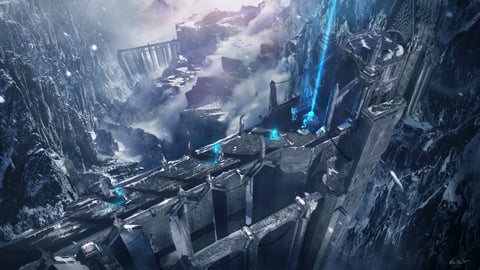
The second map which exists in League of Legends is the Howling Abyss. This map is played on a single lane and is used in the specific gameplay mode called ARAM. In ARAM, a random champion is assigned to each player, taking away their choice of choosing a champion.
In this game mode, players also can't go back to the base to shop or heal. Only once they've died can they buy items. There are small healing pods that spawn on the side in case a player's health is low.
The Howling Abyss is situated in the Freljord according to League of Legends lore and there used to be a small easter egg when playing ARAM, that allowed players to listen to a 1-minute monologue from Lissandra. Sadly Riot got rid of this easter egg in Abyss.
Nexus Blitz
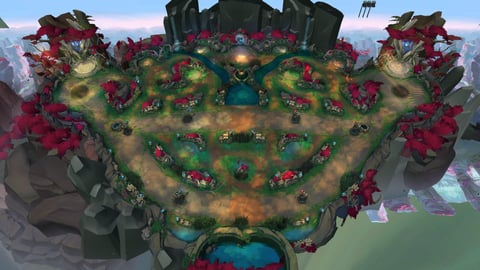
There is also the Nexus Blitz map, which is used for the game mode Nexus Blitz. The first time this game mode was added was back in 2018. In 2020, the mode was brought back and the map was revamped with new visuals.
Nexus Blitz is a fun game mode, wherein a match lasts around 20 minutes. In those 20 minutes, teams must try to destroy the opposing Nexus, while also finishing off specific tasks. Each game has different tasks, making it a unique and fun game mode.
This map and game mode aren’t available constantly though and are only part of the League client for short periods of time.
Why Doesn’t League of Legends Have More Maps?
League of Legends used to have more maps than just those two. One of the most famous maps that used to exist in the League of Legends client was the Twisted Treeline. This was the only other game mode that also had a ranked ladder.
What made Twisted Treeline so unique though? It was a map meant for 3 vs. 3 games. There was also just a top and bottom lane with the jungle in the middle. It created a unique, yet still competitive, experience.
Another map that was part of the League of Legends client was the Crystal Scar map, which was used for the Dominion game mode. This map was available in-game from 2011 to 2016. This map created another unique experience for players to practice their champions in-game situations where they had to defend and control a base.
Why was Twisted Treeline Removed?
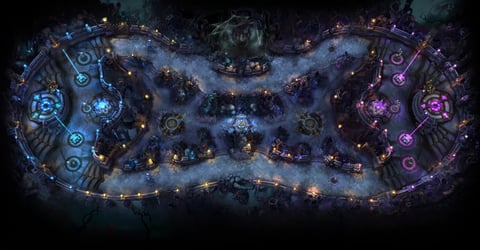
Even though Twisted Treeline was rather popular and had a loyal fanbase, Riot decided to remove the game mode in 2019. This was a legitimate way for players to earn end-of-season skins and rank up, but Riot felt that the game mode wasn’t popular enough to keep around.
Also, Riot stated that the game mode was a breeding ground for bots to level up accounts. This bot problem was another reason why the map was taken out of the game and players were left with two maps and game modes.
Why Was Dominion Removed?
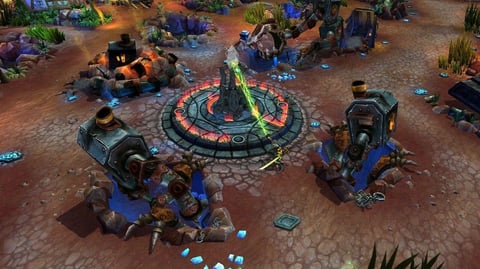
The Dominion game mode was removed in 2016 by Riot Games. This map was added during the infancy of League of Legends when the identity of League of Legends wasn’t clear yet. Originally, developers felt that Dominion could be used for new players to get a feel for the mechanics of LoL through this game mode.
Then, in 2016, the developers decided that the game mode should be retired and is best used as a short-term mode, much like Nexus Blitz, URF and Summoner Spellbook. Therefore, the Crystal Scar was disabled from the client.
Will Riot Games be Adding New Maps?
It is highly unlikely that Riot gammes is going to be adding any new maps to League of Legends anytime soon. Over the years, they’ve taken away unique game modes and maps and decided to cycle them through different patches, giving gamers only short exposure to the maps.
Other maps that were even pretty popular, like the Twisted Treeline, were completely removed, citing that they would bring them back as normal game modes in the cycle, but that hasn’t happened either. We’re still waiting here Riot!

Will Riot be Adding Unique LoL Maps like Desert and Battlefield?
Riot has had map skins in previous years, but ever since the gameplay change to the elemental rift, they’ve been unable to create unique map skins like the Snowdown Showdown map. Riot cited a lack of map skins due to the change in the map with the alcoves and the effect of the elemental Rift. Therefore, it is highly unlikely that maps like Desert and Battlefield will join the fray either.
Maps in Other MOBA Games
The Map in Wild Rift
The Wild Rift map is basically identical to that of Summoner’s Rift. Riot re-designed the map for mobile almost 1-to-1. The biggest difference being that when players are playing the game on the ‘red side’ the map is flipped.
Therefore, the terms ‘top lane’ and ‘bot lane’ do not exist in Wild Rift. Instead, those lanes are referred to as the ‘dragon lane’ and the 'Baron lane’. Other than that there is no real difference in Wild Rift.
The Map in Dota 2
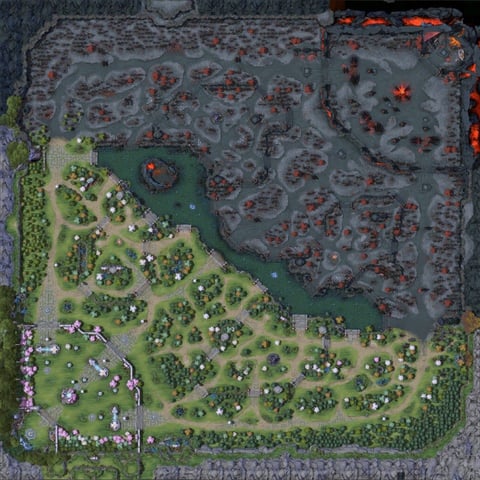
The map in Dota 2 is also very similar to Summoner’s Rift. Much of Summoner’s Rift resembles the original Dota map since the original creators of League of Legends started off playing Dota. Therefore, there are some similarities between the two maps.
Dota also has towers that defend from enemy champs and a river that goes through the map and separates the red and blue side – in Dota, the ‘blue side’ is referred to as ‘Radiant’ while the red side would be the ‘Dire’.
Dota also has an epic jungle monster similar to Baron Nashor in League of Legends which is referred to as Roshan. This monster drops the Aegis – which is also the cup the TI winners take home – which buffs the team.
There are many similarities between Dota and League of Legends when it comes to their map design, which could be due to the close relationship the two battle arenas have.


